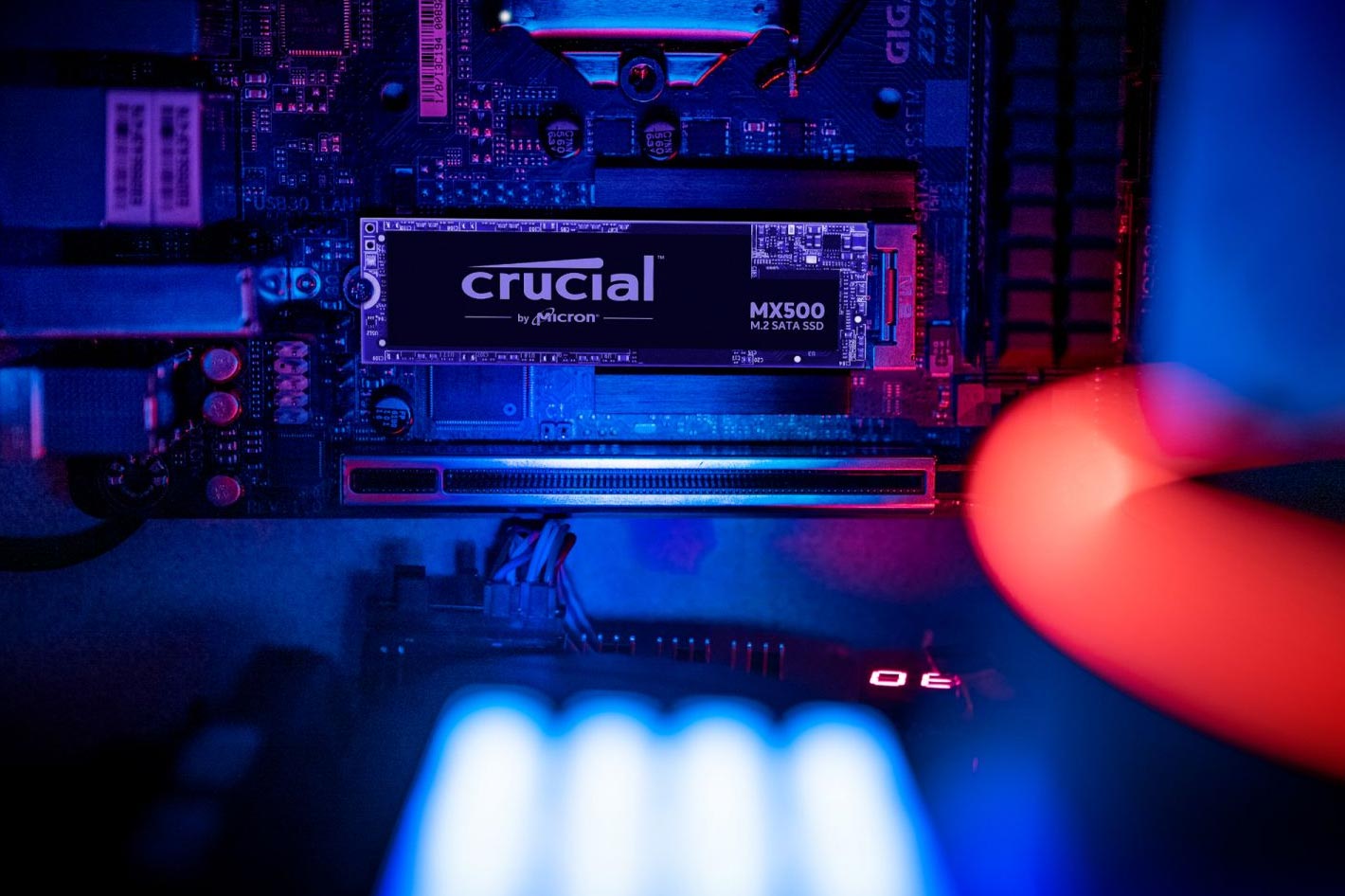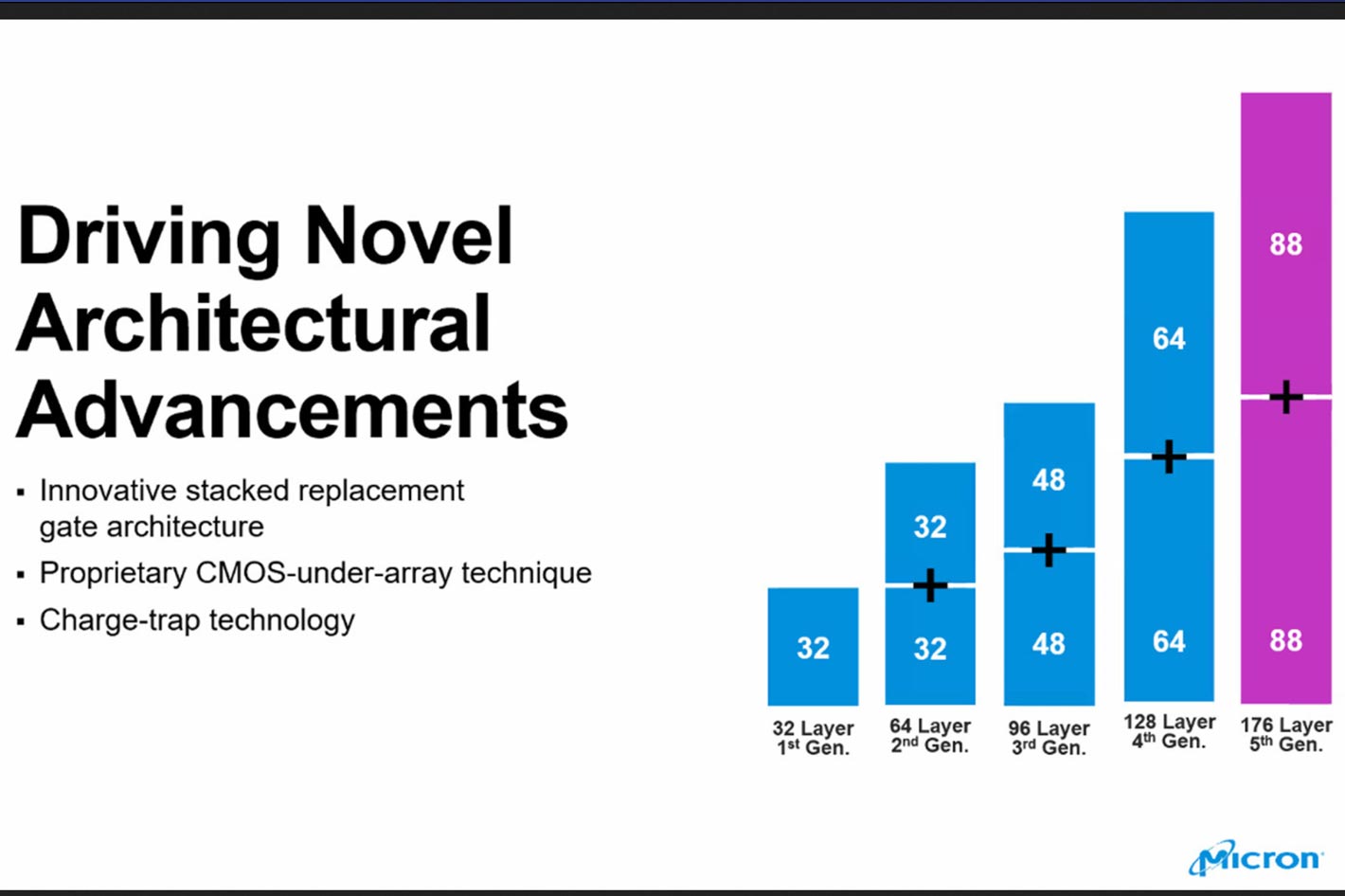
Micron Technology announced that it has begun volume shipments of the world’s first 176-layer 3D NAND flash memory, achieving unprecedented, industry-pioneering density and performance. Together, Micron’s new 176-layer technology and advanced architecture represent a radical breakthrough, enabling immense gains in application performance across a range of storage use cases spanning data center, intelligent edge and mobile devices.
Micron’s 176-layer triple-level cell 3D NAND is in volume production in Micron’s Singapore fab and now shipping to customers, including through its Crucial consumer SSD product lines. The company will introduce additional new products based on this technology during calendar 2021. Representing Micron’s fifth generation of 3D NAND and second-generation replacement-gate architecture, Micron’s 176-layer NAND is the most technologically advanced NAND node in the market.
“Micron’s 176-layer NAND sets a new bar for the industry, with a layer count that is almost 40% higher than our nearest competitor’s,” said Scott DeBoer, executive vice president of technology and products at Micron. “Combined with Micron’s CMOS-under-array architecture, this technology sustains Micron’s industry cost leadership.”


Compared with the company’s previous generation of high-volume 3D NAND, Micron’s 176-layer NAND improves both read latency and write latency by more than 35% — dramatically accelerating application performance. Featuring approximately 30% smaller die size than best-in-class competitive offerings, Micron’s 176-layer NAND’s compact design is ideal for solutions using small form factors.
“Micron’s 176-layer NAND enables breakthrough product innovation for our customers,” said Sumit Sadana, executive vice president and chief business officer at Micron. “We are deploying this technology across our broad product portfolio to bring value everywhere NAND is used, targeting growth opportunities in 5G, AI, cloud and the intelligent edge.”
With its versatile design and unrivaled density, Micron’s 176-layer NAND serves as an essential building block in technologists’ toolboxes across a broad array of sectors, including mobile storage, autonomous systems, in-vehicle infotainment, and client and data center solid-state drives (SSDs). Micron is working with industry developers to quickly integrate the new products into solutions. To simplify firmware development, Micron’s 176-layer NAND offers a single-pass programming algorithm, enabling easier integration and speeding time to market.
Explaining the tech behind the 176-layer NAND
Micron has published a lot of information about the development of the 176-layer NAND. In the early days flash memory was built in two dimensions, but a few years ago the industry bumped up against the laws of physics and couldn’t add capacity by making memory cells smaller. That’s when Micron started adding capacity by building upward. Now, the company is building flash devices with an amazing 176 layers of cells, which is, it says, “a towering human achievement! But normally, all this is far too small to see without the aid of an electron microscope.
To better explain the evolution of NAND and how the company achieved an amazing 176 layers of cells, Micron’s Technology Evangelist, Rebecca Lewington, thought it would be fun to use human-scale wooden bricks – a lot of bricks – to show just what an incredible feat of nanoscale engineering Micron’s engineers and scientists have achieved. The video clearly illustrates how incredible it is!
According to Dan Doyle, a senior manager in NAND Component Marketing at Micron Technology, “this advance is about more than just the engineering leap — it’s about freedom and enabling people to do more, learn more and broaden their horizons. Micron 176-layer NAND has thrown the door to data wide open. Not only will more people have access that is both faster and less expensive, the devices they use for that access will be better, smaller, more affordable and faster.”
Expect to see Micron’s 176-layer memory NAND appear first in Crucial SSD drives, somewhere in the near future, although no information on price, capacities or launch date is yet available, although it is expected to arrive in 2020, as Micron says the company aims to introduce “additional new products based on this technology during calendar 2021”.


